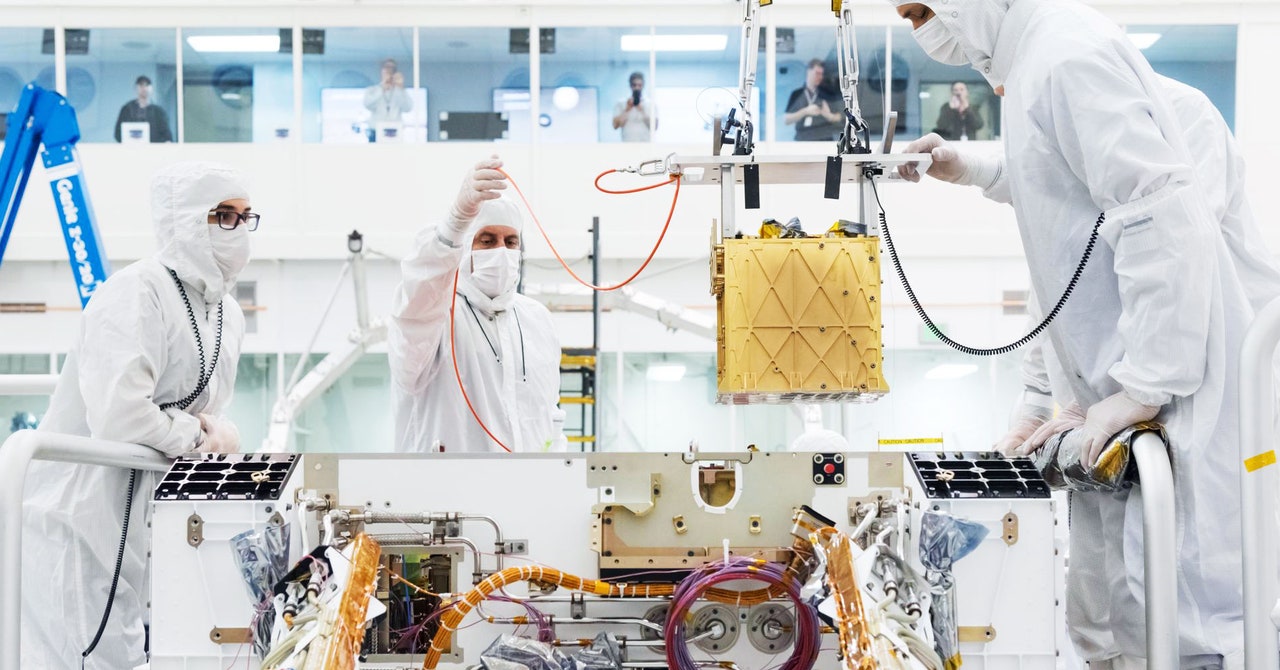
It might be a long time before any astronauts land on Mars—NASA is talking about the early 2030s, while SpaceX’s Elon Musk has promised it will be sooner. But when humans do touch down, they might find a successor to MOXIE waiting for them. Any crew coming to Mars will likely have their own device onboard their spacecraft that makes oxygen for breathing, so the bigger problem to solve is making the propellant they’ll use to fly home. “If you want to burn fuel, you need oxygen to burn it with,” Hecht says.
Hecht says that a four-person crew would only need about 1.5 metric tons of oxygen for a year for life support, but about 25 tons of it to produce thrust from 7 tons of rocket fuel. The easiest thing would be to send an automated system six months before the crew arrives so the astronauts would have some oxygen waiting for them. It also means they’ll have to carry less equipment from Earth. “It wouldn’t be worth the complexity to bring a ton of equipment to make 25 tons of oxygen for the propellant,” says Hecht.
Some of these same calculations are being considered for a prospective lunar mission, which may happen much sooner than a trip to Mars. Teams from NASA and the ESA are working to heat up lunar soil, known as regolith, to extract oxygen. In fact, regolith is 45 percent oxygen by weight, bound to metallic elements such as silicon, aluminum, calcium, magnesium, iron, and titanium, according to Beth Lomax, a doctoral student at the University of Glasgow and a researcher at the ESA’s European Space Research and Technology Centre in Noordwijk, the Netherlands.
Lomax and Alexandre Meurisse, a fellow at the research center, have been developing a device to heat regolith in a canister with molten salt in order to extract its oxygen. Like the MOXIE project, they use an electrical current to separate the oxygen from the other elements. But unlike MOXIE, they have a by-product: metallic elements that might be useful as a construction material for a lunar base. (In fact, a separate team at ESA is looking at combining astronaut pee with regolith to form a reusable geopolymer building material similar to fly ash.)
Lomax says it makes sense to figure out how to exploit what’s already on the lunar surface, rather than schlepping it over from Earth. “As long-duration space exploration and habitation seem to be becoming more of a reality, the utilization of resources is going to be necessary,” Lomax says. “It’s just not feasible for us to consistently bring every single kilogram of material that we need from Earth. We have this huge gravitational well, and the amount of energy required to get that material into space is so massive.”
By using a container of molten salt, Lomax and Meurisse are lowering the temperature needed to extract oxygen from the lunar soil, dropping it from 1,600 degrees Celsius (2,912 Fahrenheit) to around 600 C (1,112 F). That temperature could be reached by concentrating solar energy, a method already proven in solar power plants in the southwestern United States.
At NASA’s Kennedy Space Center, researchers are figuring out how to remove the metal byproducts that accumulate in the reactor vessel that contains the regolith during electrolysis. That’s important because the melted material is extremely corrosive, and both the metals and the oxygen need to be extracted in some way, according to NASA researcher Kevin Grossman. The goal is to melt the regolith without it touching the sides of the container. “If you take a bucket of regolith, and you want to melt an amount the size of a golf ball just in the very center of that, how do you get to it?” Grossman asks.


